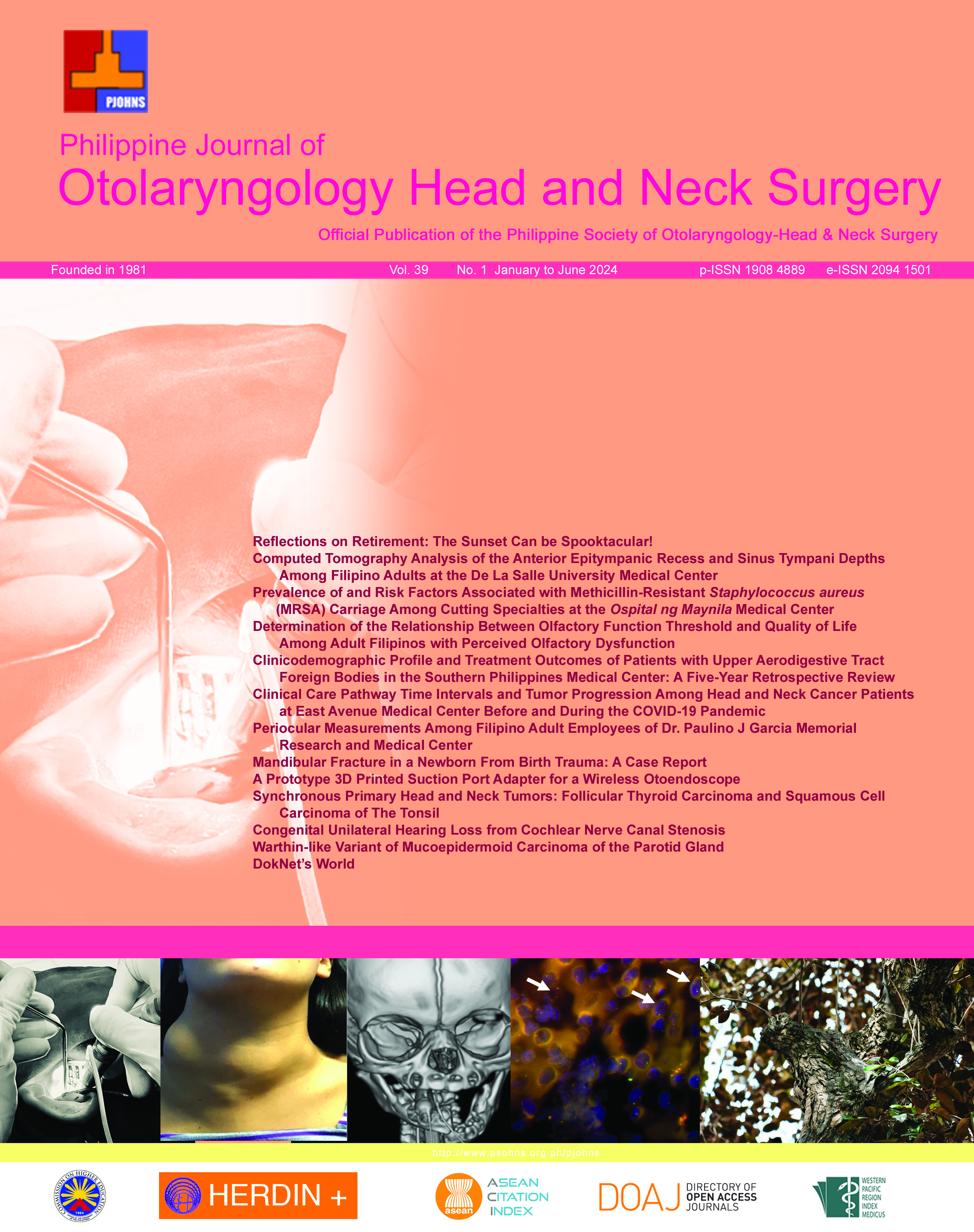Clinicodemographic Profile and Treatment Outcomes of Patients with Upper Aerodigestive Tract Foreign Bodies in the Southern Philippines Medical Center: A Five-Year Retrospective Review
DOI:
https://doi.org/10.32412/pjohns.v39i1.2231Keywords:
foreign body, aspiration, impaction, ingestion, upper aerodigestive tract, esophagoscopy, bronchoscopyAbstract
Objective: This study aims to describe the clinicodemographic profile of patients with foreign
bodies in the upper aerodigestive tract and their treatment outcomes.
Methods:
Design: Retrospective review of records
Setting: Tertiary Government Training Hospital
Participants: Records of 304 patients diagnosed with aerodigestive foreign bodies
Results: Three hundred-four (304) patients were included. The median age was 5.26 years in the pediatric age group and 42.53 years in the adult age group, with a male-to female ratio = 1.97:1. Foreign bodies were ingested in 291 (96%) patients while aspiration occurred in 13 (4%). Overall, 211 (69%) of cases involved the pediatric population (<19 years) and 93 (31%) the adult population. The most common foreign bodies reported were coins (63.5%), food (18.1%), and dentures (11.5%). Most esophageal foreign bodies (244/291; 83%) were seen at the cricopharyngeal level in all age groups. The foreign body was removed successfully in 288/291 (98%) of ingestion cases. All 13 cases of foreign body aspiration were successfully removed by bronchoscopy. All patients were discharged improved.
Conclusion: Most upper aerodigestive tract foreign bodies involved the pediatric age group.
Predisposing conditions were mainly due to accidental ingestion and aspiration while playing in the pediatric population and negligence in eating among adults. Almost all ingestion cases were successfully treated with esophagoscopy, while all aspirations were treated successfully with bronchoscopy. Most intraoperative and postoperative complications who were managed conservatively by observation, although some cases required referral to other surgical departments and were treated surgically. All patients were discharged improved
Downloads
Published
How to Cite
Issue
Section
License
Copyright (c) 2024 Publisher

This work is licensed under a Creative Commons Attribution-NonCommercial-NoDerivatives 4.0 International License.
Copyright transfer (all authors; where the work is not protected by a copyright act e.g. US federal employment at the time of manuscript preparation, and there is no copyright of which ownership can be transferred, a separate statement is hereby submitted by each concerned author). In consideration of the action taken by the Philippine Journal of Otolaryngology Head and Neck Surgery in reviewing and editing this manuscript, I hereby assign, transfer and convey all rights, title and interest in the work, including copyright ownership, to the Philippine Society of Otolaryngology Head and Neck Surgery, Inc. (PSOHNS) in the event that this work is published by the PSOHNS. In making this assignment of ownership, I understand that all accepted manuscripts become the permanent property of the PSOHNS and may not be published elsewhere without written permission from the PSOHNS unless shared under the terms of a Creative Commons Attribution-NonCommercial-NoDerivatives 4.0 International (CC BY-NC-ND 4.0) license.



